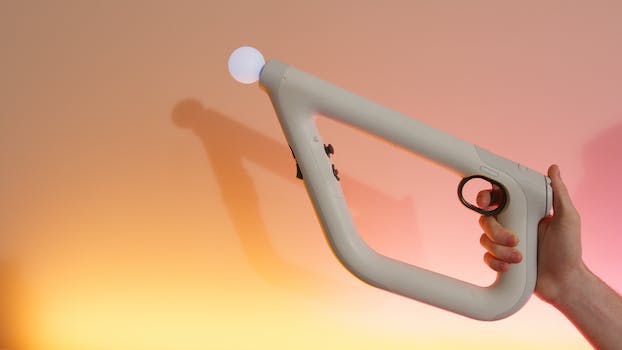

-
Table of Contents
Prevent MSDs in the office: Tips for a healthier work environment.
Introduction
Musculoskeletal Disorders (MSDs) are a common problem in office settings, often caused by poor ergonomics and repetitive tasks. These disorders can lead to pain, discomfort, and reduced productivity. However, by following some simple tips, you can effectively avoid MSDs in the office and maintain a healthy work environment.
Ergonomic Office Setup: Key Tips for Preventing MSDs
Musculoskeletal disorders (MSDs) are a common problem in office settings, affecting millions of workers worldwide. These disorders can cause pain, discomfort, and reduced productivity. However, with the right ergonomic office setup, you can significantly reduce the risk of developing MSDs.
One of the key tips for preventing MSDs is to ensure that your workstation is properly set up. Start by adjusting your chair to the correct height. Your feet should be flat on the floor, and your knees should be at a 90-degree angle. This will help to maintain good posture and reduce strain on your back and legs.
Next, make sure that your desk is at the right height. Your elbows should be at a 90-degree angle when you are typing, and your wrists should be in a neutral position. Avoid reaching or stretching to reach your keyboard or mouse, as this can put unnecessary strain on your muscles and joints.
Another important aspect of an ergonomic office setup is your computer monitor. Position it at eye level, about 20 inches away from your face. This will help to reduce eye strain and prevent neck and shoulder pain. If necessary, use a monitor stand or adjust the height of your chair to achieve the correct position.
In addition to setting up your workstation correctly, it is also important to take regular breaks and move around. Sitting for long periods can lead to muscle stiffness and tension. Aim to take a short break every hour to stretch and move your body. This will help to improve circulation and reduce the risk of developing MSDs.
When it comes to using your computer, it is important to use proper typing and mouse techniques. Avoid resting your wrists on the edge of your desk while typing, as this can lead to wrist strain. Instead, use a wrist rest or a padded mouse pad to support your wrists and keep them in a neutral position.
Furthermore, it is crucial to pay attention to your posture throughout the day. Sit up straight and avoid slouching or hunching over your desk. Use a chair with good lumbar support to maintain the natural curve of your spine. Consider using a cushion or a rolled-up towel to support your lower back if your chair does not provide adequate support.
Lastly, it is important to listen to your body and address any discomfort or pain immediately. Ignoring the early signs of MSDs can lead to more serious problems down the line. If you experience persistent pain or discomfort, consult a healthcare professional for advice and treatment options.
In conclusion, preventing MSDs in the office is possible with the right ergonomic office setup. Adjusting your chair, desk, and computer monitor to the correct height, taking regular breaks, using proper typing and mouse techniques, maintaining good posture, and addressing any discomfort or pain are all key tips for avoiding MSDs. By implementing these strategies, you can create a safe and comfortable work environment that promotes productivity and protects your musculoskeletal health.
Effective Stretching Exercises to Prevent Musculoskeletal Disorders in the Office

Musculoskeletal disorders (MSDs) are a common problem in office settings, often caused by poor posture and repetitive movements. These disorders can lead to pain, discomfort, and reduced productivity. However, there are steps you can take to prevent MSDs and maintain a healthy musculoskeletal system. One effective way to do this is through stretching exercises specifically designed for the office environment.
Stretching exercises can help to improve flexibility, reduce muscle tension, and increase blood flow to the muscles. By incorporating these exercises into your daily routine, you can minimize the risk of developing MSDs and promote overall well-being.
One simple stretching exercise that can be done at your desk is the neck stretch. Start by sitting up straight and slowly tilt your head to one side, bringing your ear towards your shoulder. Hold this position for 15-30 seconds, then repeat on the other side. This stretch helps to relieve tension in the neck and upper back, which are common areas of discomfort for office workers.
Another beneficial exercise is the shoulder roll. Begin by sitting up straight and rolling your shoulders forward in a circular motion. Repeat this movement 10 times, then reverse the direction and roll your shoulders backward. This exercise helps to release tension in the shoulders and upper back, which can become tight from prolonged sitting and computer use.
To target the lower back, try the seated twist stretch. Start by sitting up straight and placing your right hand on the outside of your left knee. Slowly twist your torso to the left, using your hand to gently deepen the stretch. Hold for 15-30 seconds, then repeat on the other side. This stretch helps to improve spinal mobility and relieve tension in the lower back.
In addition to these exercises, it's important to incorporate full-body stretches into your routine. One effective stretch is the standing forward bend. Stand with your feet hip-width apart and slowly bend forward at the waist, reaching towards your toes. Hold this position for 15-30 seconds, then slowly roll back up to a standing position. This stretch helps to lengthen the hamstrings and release tension in the lower back.
Another beneficial full-body stretch is the standing quad stretch. Stand with your feet hip-width apart and lift your right foot towards your glutes, grabbing onto your ankle or foot with your right hand. Hold this position for 15-30 seconds, then repeat on the other side. This stretch helps to release tension in the quadriceps, which can become tight from prolonged sitting.
It's important to remember that stretching exercises should be done in a controlled and comfortable manner. Avoid any movements that cause pain or discomfort, and always listen to your body. If you have any pre-existing conditions or injuries, it's best to consult with a healthcare professional before starting a stretching routine.
By incorporating these stretching exercises into your daily routine, you can effectively prevent musculoskeletal disorders in the office. Remember to take regular breaks throughout the day to stretch and move around, as prolonged sitting can contribute to muscle stiffness and tension. With a little effort and consistency, you can maintain a healthy musculoskeletal system and enjoy a pain-free work environment.
Importance of Regular Breaks and Movement to Avoid MSDs in the Workplace
Musculoskeletal disorders (MSDs) are a common problem in office settings, affecting millions of workers worldwide. These disorders can cause pain, discomfort, and reduced productivity. However, there are steps that can be taken to prevent and manage MSDs in the workplace. One of the most important strategies is to take regular breaks and incorporate movement throughout the workday.
Sitting for long periods of time can put a significant amount of stress on the muscles, joints, and ligaments of the body. This can lead to the development of MSDs over time. Taking regular breaks from sitting and incorporating movement into the workday can help to alleviate this stress and reduce the risk of developing MSDs.
One way to incorporate movement into the workday is to take short breaks every hour. During these breaks, it is important to get up from your desk and move around. This can be as simple as taking a short walk around the office or doing some stretching exercises. By taking these breaks, you give your body a chance to rest and recover from the strain of sitting for long periods of time.
In addition to taking regular breaks, it is also important to incorporate movement into your daily routine. This can be done by using a standing desk or adjustable workstation. These types of workstations allow you to alternate between sitting and standing throughout the day, reducing the amount of time spent in a seated position. Standing while working can help to improve posture, increase circulation, and reduce the risk of developing MSDs.
Another way to incorporate movement into the workday is to participate in regular physical activity outside of the office. Engaging in activities such as walking, jogging, or cycling can help to strengthen the muscles and joints, improve flexibility, and reduce the risk of developing MSDs. It is recommended to aim for at least 150 minutes of moderate-intensity aerobic activity per week, along with strength training exercises at least twice a week.
In addition to taking regular breaks and incorporating movement into the workday, it is also important to maintain proper ergonomics in the office. This includes having a comfortable and supportive chair, positioning the computer monitor at eye level, and keeping the keyboard and mouse at a comfortable height. Proper ergonomics can help to reduce the strain on the muscles and joints, reducing the risk of developing MSDs.
It is also important to listen to your body and pay attention to any signs of discomfort or pain. If you start to experience symptoms such as back pain, neck pain, or numbness and tingling in the hands or fingers, it is important to take action. This may include adjusting your workstation, seeking medical advice, or participating in physical therapy.
In conclusion, taking regular breaks and incorporating movement into the workday is essential for avoiding MSDs in the office. By giving your body a chance to rest and recover, you can reduce the risk of developing these painful and debilitating disorders. Remember to listen to your body, maintain proper ergonomics, and engage in regular physical activity outside of the office. By following these tips, you can create a healthier and more productive work environment.
Q&A
1. What are some tips for avoiding MSDs in the office?
- Maintain proper posture while sitting at your desk.
- Take regular breaks to stretch and move around.
- Use ergonomic furniture and equipment.
- Adjust your workstation to fit your body's needs.
- Avoid repetitive motions and excessive force when performing tasks.
2. How can I prevent MSDs while using a computer?
- Position your monitor at eye level to avoid straining your neck.
- Use a keyboard and mouse that are comfortable and easy to use.
- Keep your wrists straight and supported while typing.
- Take short breaks to rest your eyes and stretch your muscles.
3. What are some exercises that can help prevent MSDs in the office?
- Neck stretches and rotations to relieve tension.
- Shoulder rolls and stretches to improve flexibility.
- Wrist and finger exercises to prevent strain from typing.
- Back stretches and core strengthening exercises to support proper posture.
- Leg stretches and calf raises to improve circulation and reduce leg fatigue.
Conclusion
In conclusion, implementing certain tips can help individuals avoid Musculoskeletal Disorders (MSDs) in the office. These include maintaining proper posture, using ergonomic furniture and equipment, taking regular breaks, stretching and exercising, and seeking medical attention if symptoms persist. By following these guidelines, individuals can reduce the risk of developing MSDs and promote a healthier work environment.












